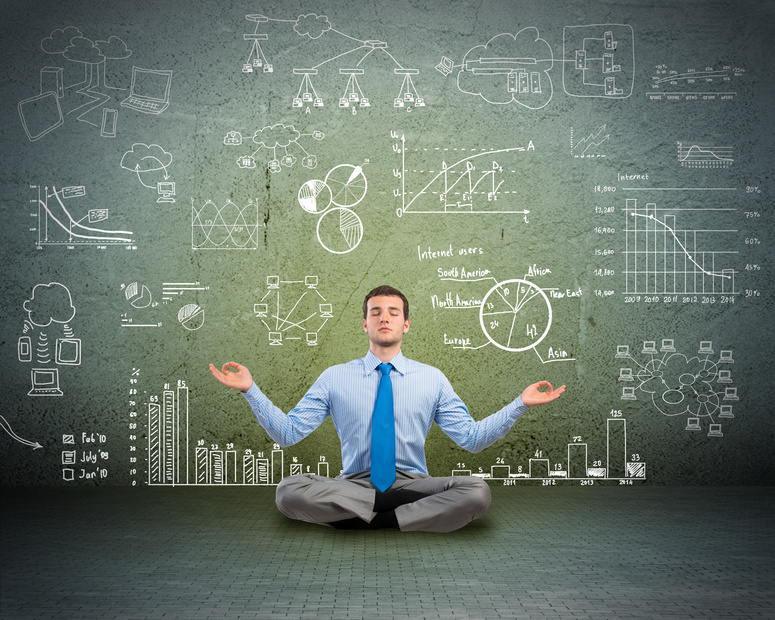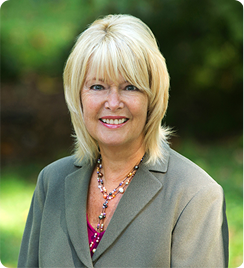
How often do you think about several things at once? Do you count yourself among those who spend time worrying? Is it worse at work or at home? Perhaps you hear bad news about someone you care about; your to-do list is calling; or you feel life is out of control. How many hours, days, weeks have you spent worrying? It is possible to change this habit in order to experience more joy and calm.
Last week I heard author/educator Genie Z. Laborde, Ph.D, speak about presence. We are aware of the value of meditation and the practice of being in the present moment, but often we’re too busy to stop and practice it.
We end up substituting the habit of juggling a hundred thoughts, tasks, and responsibilities for something soothing and healing. Why wouldn’t we choose to experience a state that comforts us? Why live in discomfort?
We fool ourselves into thinking that we don’t have a choice. We say, no one understands the pressures we’re under. No one is inside our heads, nor would they want to be there…we don’t even want to be there.
Last week I made an effort to breathe deeply and clear my mind for the purpose of the workshop exercise. This is what I encourage my clients to do. I believe in it and I’ve seen it work.
“If you want to conquer the anxiety of life, live in the moment, live in the breath.”
Amit Ray
Dr. Laborde said being in the now, which she equates with being in the right brain, erases fear. Employing all of our senses to be solidly in the present also increases our creative capacity. We are able to discover more innovative solutions when we are focused.
People find that activities like producing art, gardening, or building something enable you to be in a meditative-like state. You are engaged in one activity. Nothing else interferes. I use knitting and beading as a way to get out of my head, which serves as a stress reducing tool. What is your tool?
Another way to practice presence is while walking. You’ve heard of walking meditations, possibly for those who can’t sit still or as another option for “sitting”. I formerly used walking as a way to work out problems. Thinking hard about everything. But these days my mind is blank as I walk. Am I wasting time? No, I feel refreshed, body and mind.
The tool of being present can be used at work and home. Working parents are often dealing with competing priorities and worries. Kate is a mother of two school aged children. While raising them is a full time job, Kate also works part time outside the home. Her volume of responsibilities is a challenge, but Kate is committed to pursuing her career. She makes an effort to be truly present at work and pushes aside her thoughts about home. Likewise when she is home, Kate strives to leave her work thoughts at work.
The concept that multi-tasking is an advantageous skill has been refuted. We tend to admire supermen and women who do so much, often simultaneously. However, numerous studies find that multi-tasking leads to ineffectiveness. The brain does better holding one thought at a time.
The practice of mindfulness or noticing the present moment without judgment can lessen worrying and promote physical and mental health. It can become a tool to deal with the stresses of life. The more you “practice” it, the easier it becomes. It’s a habit that costs nothing and can be done anywhere for any length of time. In meetings, at your desk, during lunch. No one has to know what you are doing.
Mindfulness primes you for being present in your daily life. Associating your breath with coming back to the now reminds you to give full attention. For example, giving your undivided attention in conversations reaps huge benefits with co-workers, clients, bosses, and family. People crave being heard and can sense when you aren’t fully there.
Resources to practice mindfulness are abundant. Here is one place to begin:
http://www.helpguide.org/harvard/mindfulness.htm
“Mindfulness is simply being aware of what is happening right now without wishing it were different; enjoying the pleasant without holding on when it changes (which it will); being with the unpleasant without fearing it will always be this way (which it won’t).”
James Baraz
Ways to begin right now:
Commit to pause and ask “Am I Here?”
Start a meditation practice
Practice giving your full attention at work and home
Rest in the calm of now
Pause, take a breath, then again
Smooth sailing and see you on the path!






